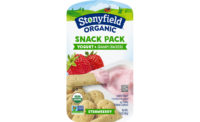Study finds healthy, competitive poultry sector
Competition is alive and well in the broiler chicken industry and benefits chicken farmers, poultry companies and consumers, according to a new industry study.
"On the national scale, it is the overall conclusion of this study that the chicken industry is a competitive and thriving sector," wrote Dr. Thomas Elam, an agricultural economist and president of FarmEcon LLC. "Intense competition among chicken companies leads to product innovation and lower prices for consumers. The vertically integrated structure of the industry has given it an advantage compared to its competitors and allowed it to respond quickly to changing consumer demand."
Elam's study was commissioned by the National Chicken Council (NCC) and released in preparation for a workshop on competition in agriculture to be held Friday at Alabama A&M University in Normal, Ala., by the U.S. Department of Justice and the U.S. Department of Agriculture. The study also is available at www.nationalchickencouncil.com
Elam said that a vertically integrated system -- in which a single company owns or controls virtually all phases of the operation -- also benefits independent family farmers who raise chickens under contracts with the companies.
"Contract growers are insulated from integrator margin risk by fixed price contract terms. They receive payments that are not tied to market variations in prices of chicken and feed," Elam said. "These risks are largely shifted to the integrator, who absorbs the financial losses from adverse weather, general disease outbreaks, feed quality, and other factors potentially adversely affecting live chicken performance."
As to whether contract growers are satisfied with the system, a study by the Farmers' Legal Action Group found that 75 percent of broiler growers surveyed were satisfied with their decision to go into broiler growing, Elam noted. He also pointed out that many chicken companies have waiting lists of people who want to become contract growers, and lists of farmers already in the business who want to expand their operations. This shows that growers can earn a good return on their investments, Elam wrote.
"If, in general, growers were chronically earning less than a competitive return on their investment and labor, these waiting lists would likely not exist," he noted.
Production and consumption of chicken has grown almost every year since the 1960s, Elam noted, as consumer tastes changed, new markets emerged, and new products were developed, and chicken companies have achieved a strong competitive position with respect to other meats.
"Contract chicken growers have historically been able to expand their businesses as chicken production has grown, and have had the opportunity to share in the financial success of the entire sector," he wrote.
The broiler chicken industry (broilers are chicken that are raised for their meat rather than for eggs) is more concentrated today than it has been in the past, Elam wrote, with the top four companies having 53 percent of production in 2009 compared to 40 percent in 1992. He noted, however, that the chicken industry is less concentrated than meatpacking at 79 percent or pork processing at 65 percent.
Wholesale and retail chicken prices, adjusted for inflation, have declined relative to overall consumer prices and major competing meats, the study said.
"The declining real prices of retail and wholesale chicken are evidence that real cost savings are being passed on to consumers via market competition," the study said.
"Vertical integration has proven to be a very successful and cost competitive method to organize chicken production and marketing," the study said. "As a result, the success of vertically integrated chicken production in the U.S. has spread to the global chicken sector."
NCC represents integrated chicken producer-processors, the companies that produce and process chickens. NCC member companies constitute approximately 95 percent of the chicken sold in the United States.
"On the national scale, it is the overall conclusion of this study that the chicken industry is a competitive and thriving sector," wrote Dr. Thomas Elam, an agricultural economist and president of FarmEcon LLC. "Intense competition among chicken companies leads to product innovation and lower prices for consumers. The vertically integrated structure of the industry has given it an advantage compared to its competitors and allowed it to respond quickly to changing consumer demand."
Elam's study was commissioned by the National Chicken Council (NCC) and released in preparation for a workshop on competition in agriculture to be held Friday at Alabama A&M University in Normal, Ala., by the U.S. Department of Justice and the U.S. Department of Agriculture. The study also is available at www.nationalchickencouncil.com
Elam said that a vertically integrated system -- in which a single company owns or controls virtually all phases of the operation -- also benefits independent family farmers who raise chickens under contracts with the companies.
"Contract growers are insulated from integrator margin risk by fixed price contract terms. They receive payments that are not tied to market variations in prices of chicken and feed," Elam said. "These risks are largely shifted to the integrator, who absorbs the financial losses from adverse weather, general disease outbreaks, feed quality, and other factors potentially adversely affecting live chicken performance."
As to whether contract growers are satisfied with the system, a study by the Farmers' Legal Action Group found that 75 percent of broiler growers surveyed were satisfied with their decision to go into broiler growing, Elam noted. He also pointed out that many chicken companies have waiting lists of people who want to become contract growers, and lists of farmers already in the business who want to expand their operations. This shows that growers can earn a good return on their investments, Elam wrote.
"If, in general, growers were chronically earning less than a competitive return on their investment and labor, these waiting lists would likely not exist," he noted.
Production and consumption of chicken has grown almost every year since the 1960s, Elam noted, as consumer tastes changed, new markets emerged, and new products were developed, and chicken companies have achieved a strong competitive position with respect to other meats.
"Contract chicken growers have historically been able to expand their businesses as chicken production has grown, and have had the opportunity to share in the financial success of the entire sector," he wrote.
The broiler chicken industry (broilers are chicken that are raised for their meat rather than for eggs) is more concentrated today than it has been in the past, Elam wrote, with the top four companies having 53 percent of production in 2009 compared to 40 percent in 1992. He noted, however, that the chicken industry is less concentrated than meatpacking at 79 percent or pork processing at 65 percent.
Wholesale and retail chicken prices, adjusted for inflation, have declined relative to overall consumer prices and major competing meats, the study said.
"The declining real prices of retail and wholesale chicken are evidence that real cost savings are being passed on to consumers via market competition," the study said.
"Vertical integration has proven to be a very successful and cost competitive method to organize chicken production and marketing," the study said. "As a result, the success of vertically integrated chicken production in the U.S. has spread to the global chicken sector."
NCC represents integrated chicken producer-processors, the companies that produce and process chickens. NCC member companies constitute approximately 95 percent of the chicken sold in the United States.
Looking for a reprint of this article?
From high-res PDFs to custom plaques, order your copy today!




